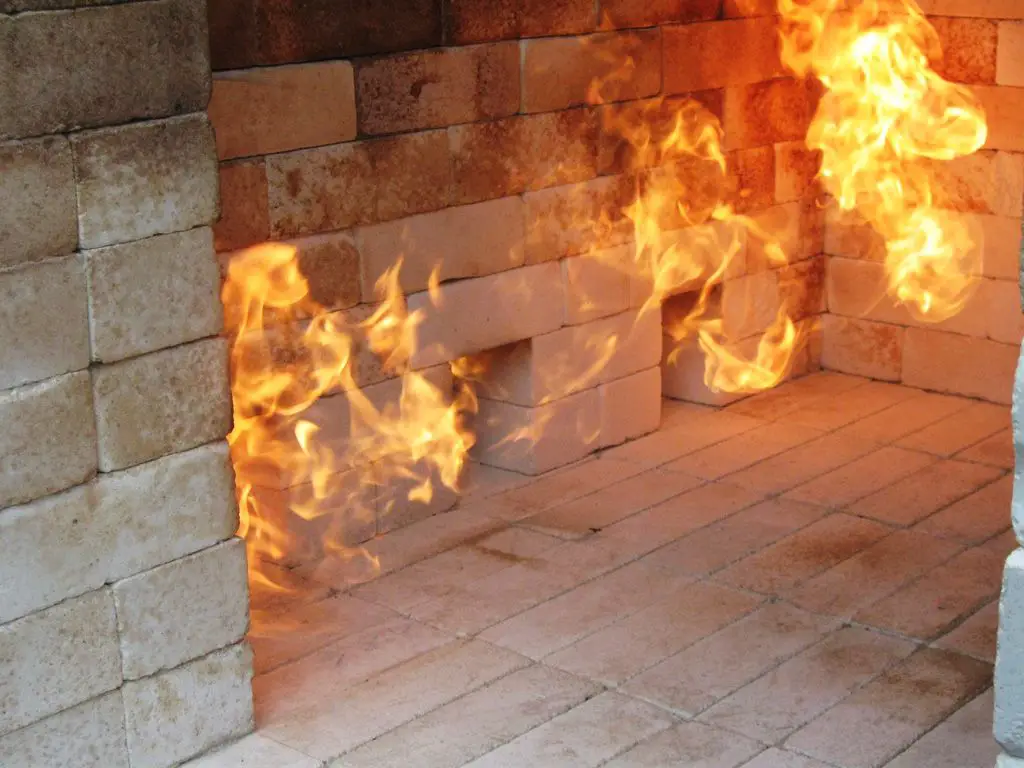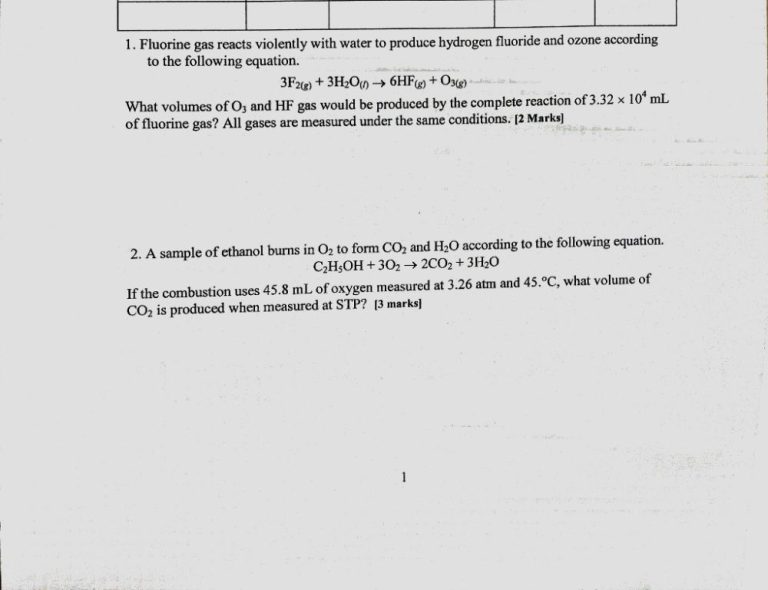Is Fire Clay Strong?
What is Fire Clay?
Fire clay is a type of clay that is known for its high heat resistance and refractoriness (resistance to high temperatures). It is composed primarily of silica and alumina, which give it the ability to withstand extremely high temperatures of over 1,400°C (2,552°F) without softening or melting.
Fire clays originate from secondary kaolin deposits and ancient sedimentary rocks formed up to 300 million years ago. Over time and through weathering processes, the kaolin deposits became enriched with alumina and hardened. This produced the dense, plastic, white-burning clays that are known today as fire clays [1].
The key properties of fire clay that make it so useful are its high refractoriness, low iron content, high plasticity when mixed with water, and high strength when fired. It can resist thermal shock, abrasion, and corrosion. When used to produce firebrick, fire clay can withstand the intense heat inside furnaces, kilns, fireplaces and other high-temperature applications without cracking or distorting.
Types of Fire Clay
Fire clay can be categorized into several common types that are used in various industrial applications:
Kaolin (china clay) – This very pure clay is white in color and composed mainly of kaolinite, with minor amounts of quartz, feldspar, and other impurities. It has low plasticity and high dry strength. Kaolin fire clay is valued in ceramics for its whiteness and refractory properties.1
Ball clay – This secondary clay has high plasticity and high dry strength due to its fine particle size. It fires to a light cream or tan color. Ball clay is often blended with other clays to improve workability.1
Fire clay – Broadly refers to any clay with a high content of kaolinite that can withstand high temperatures. Fire clays are refractory, meaning they can withstand heat without deforming or melting. They are essential for insulating kilns. 2
Flint clay – Has low plasticity due to a high silica content but becomes very hard when fired. It’s used in stoneware bodies and sanitaryware. Flint clay can improve thermal shock resistance.1
Common brick clay – Abundant clay deposits used to make brick. Lower in kaolinite than pure fire clays but still refractory. Provides an economical and workable material.1
Uses of Fire Clay
Fire clay has several key uses, primarily in high temperature applications where resistance to heat is required. Some of the main uses include:
Refractory bricks: One of the most common uses of fire clay is manufacturing refractory bricks used to line furnaces and kilns. Fire clay can withstand extremely high temperatures so it is ideal for lining structures where heat is applied, like industrial furnaces and kilns. Fire clay bricks are a type of refractory material used in lining furnaces, kilns, fire boxes, and fireplaces. [1]
Ceramics: Fire clays are also widely used in ceramics manufacturing. The fire clay is used to create bricks, ceramic pots and tiles that must withstand high heat in kilns. Fire clay adds plasticity and strength when mixed with other clays for use in ceramics. [2]

Cement: Some fire clays contain cementitious properties and can actually set hydraulically. This makes fire clay useful as an ingredient in masonry cement and mortar mixes. The fire clay improves strength and durability. [3]
Soil conditioning: Natural fire clays are also used in agriculture to help improve soil structure and aeration. The fire clay particles can loosen heavy soils when tilled into the ground.
Strength of Fire Clay
Fire clay has a high compressive strength compared to other clays. According to the ASTM standard, the fired compressive strength of fire clay must be at least 2,500 psi (https://www.masonrymagazine.com/blog/2022/03/08/compressive-strength-of-fired-facing-brick/). The average compressive strength for fired fire clay can range from 4,000-6,000 psi. This high compressive strength allows products made from fire clay to withstand heavy structural loads and high heat without cracking or breaking down.
In addition to compressive strength, fire clay also exhibits a high refractoriness and resistance to thermal shock. Refractoriness refers to the high temperature at which clays vitrify or melt. Fire clays remain stable at temperatures exceeding 1,600°C (https://digitalfire.com/glossary/fired+strength). This exceptional heat tolerance enables fire clay to withstand rapid heating and cooling cycles without cracking, making it ideal for kilns, furnaces, and other high-temperature applications.
The combination of high compressive strength, heat tolerance, and resistance to thermal shock gives fire clay exceptional durability compared to other clays. These properties allow it to withstand the rigors of structural load bearing and exposure to extreme temperatures, making fire clay a versatile material for specialized high-heat and high-strength applications.
Factors Affecting Strength
The strength of fire clay is affected by several factors, primarily:
Clay Composition
The chemical and mineralogical makeup of the clay determines its initial strength properties. Fire clays high in kaolinite and low in fluxes like calcium and magnesium tend to be stronger. According to research by E.O Eze published in Science Direct, kaolinite-rich fire clays gain strength upon firing as the kaolinite transforms into mullite crystals at high temperatures.
Firing Temperature
Firing temperature has a significant impact on fire clay strength. As the temperature increases, more bonds form between clay particles, leading to vitrification which increases strength. Complete vitrification happens between 2200°F-2300°F for most fire clays. According to Digital Fire, the highest strength is achieved just below the temperature where excessive glass formation causes weakening.
Additives
Certain additives can improve fire clay strength. Quartz, alumina, and feldspar are commonly used to increase strength through the formation of rigid glass bonds during firing. However, too much glass phase addition can reduce strength, so small percentages (5-15%) are typically used.
Testing Fire Clay Strength
Standard test methods for testing the strength of fire clay include compression testing and modulus of rupture (MOR) testing. Compression testing applies force to a sample until it breaks, measuring the maximum load it can withstand. MOR testing evaluates strength by bending fired clay bars until they fracture.
Testing is commonly done in ceramic testing laboratories using specialized equipment. This includes hydraulic presses for compression testing and three-point bending test apparatus for MOR measurements. Specimens are typically formed into standard sizes and shapes, then fired under controlled conditions before testing.
According to digitalfire.com, important lab equipment may include:
- Hydraulic compression testing machine
- Three-point bend test fixture
- High temperature kiln for firing specimens
- Mold for preparing standardized test bars or cylinders
By following standardized procedures using calibrated equipment, the structural properties and performance of fire clays can be quantified and compared. This data helps potters and industry evaluate which fire clay is strongest for their particular application.
Fire Clay vs. Other Clays
Fire clay has some key differences from other clays like kaolin or ball clay when it comes to strength and heat tolerance:
Strength: Fire clay can be quite strong when fired at high temperatures according to Digital Fire. However, kaolin clay has greater purity and strength when vitrified at high temperatures, though it lacks the plasticity of fire clay according to the Shreeram Kaolin site.
Heat tolerance: Fire clays are more refractory than ball clays, meaning they can withstand higher temperatures as explained on Shreeram Kaolin. Kaolin also has a high melting point, making it suitable for high temperature applications per the Digital Fire glossary.
Tradeoffs: The purity of kaolin makes it stronger when vitrified, but it lacks the plasticity and workability of fire clay. Fire clays offer high heat tolerance but need grog added to reach the strength of kaolin according to I Forge Iron. The choice depends on the specific needs of the application.
Optimizing Fire Clay Strength
There are several techniques that can help optimize and maximize the strength of fire clay:
Choosing the Right Clay Type: Not all fire clays are created equal. Some are naturally stronger and more durable than others. Clays like kaolin tend to be weaker, while stoneware clays and fire clays with higher iron and silica content produce stronger fired pieces.[1]
Firing and Curing: Firing to higher temperatures (cone 6-10) will increase strength as the clay vitrifies more completely. Longer soak times at peak temperature allow the clay to fully vitrify. Proper drying and bisque firing are also important to prevent flaws that weaken the final piece.[2]
Reinforcing Additives: Adding grog, crushed fire bricks, silica, or other refractory materials to a clay body can reinforce it and improve fired strength. Calcium carbonate and mineral oxides also help with vitrification and durability.[3]
Proper clay preparation, using high quality fire clay, and optimizing the firing process are key factors for producing strong, durable ceramic pieces from fire clay.
Examples of Strong Fire Clay Products
Fire clay’s high heat resistance, durability, and thermal shock resistance make it ideal for manufacturing strong refractory products that can withstand extremely high temperatures inside kilns, furnaces, and fireplaces. Some examples of strong fire clay products include:
Refractory Bricks – Refractory firebricks made from fire clay are integral components of kilns, furnaces, fireplaces and chimneys. They retain their strength and shape at high temperatures and protect the structures from heat damage. Fire clay bricks typically have heat resistance above 1,800°F (1,000°C).
Kiln Furniture – Pieces like kiln shelves, posts, and props that support ceramics during firing are often made of fire clay for strength and durability. These furnishings must withstand rapid temperature changes and prolonged high heat inside kilns. Fire clay’s thermal shock resistance prevents cracking or warping.
Ceramic Cookware – Some ceramic pots, bakeware and tableware meant for oven and stovetop cooking are manufactured partly or wholly from fire clay. These pieces can be used at very high temperatures without cracking. The addition of fire clay provides thermal durability.
By harnessing the inherent strength of fire clay, manufacturers can produce refractory products with the high heat tolerance required for working with fire in various applications. Fire clay is an essential material for creating durable, long-lasting ceramic items used at extreme temperatures.
Conclusion
Fire clay is an important material valued for its high heat resistance and durability. The key to understanding fire clay strength lies in its chemical composition and mineral contents. Alumina and silica provide the basis for its refractory properties, while factors like plasticity and firing conditions allow optimization of mechanical strength.
Tests like modulus of rupture and creep resistance help quantify fire clay’s physical performance. When properly formulated and fired, fire clays can achieve the strength needed for applications like kiln construction and foundry castings. Though not as strong as some pure cements, optimized fire clay formulations provide an unparalleled combination of heat resistance, chemical durability, and service life in extreme environments.
In summary, fire clay can attain substantial strength when crafted using the proper clay sources, processing methods, and firing conditions. With an understanding of the factors impacting its performance, fire clay remains an indispensable material whose unique properties and strengths have stood the test of time.

